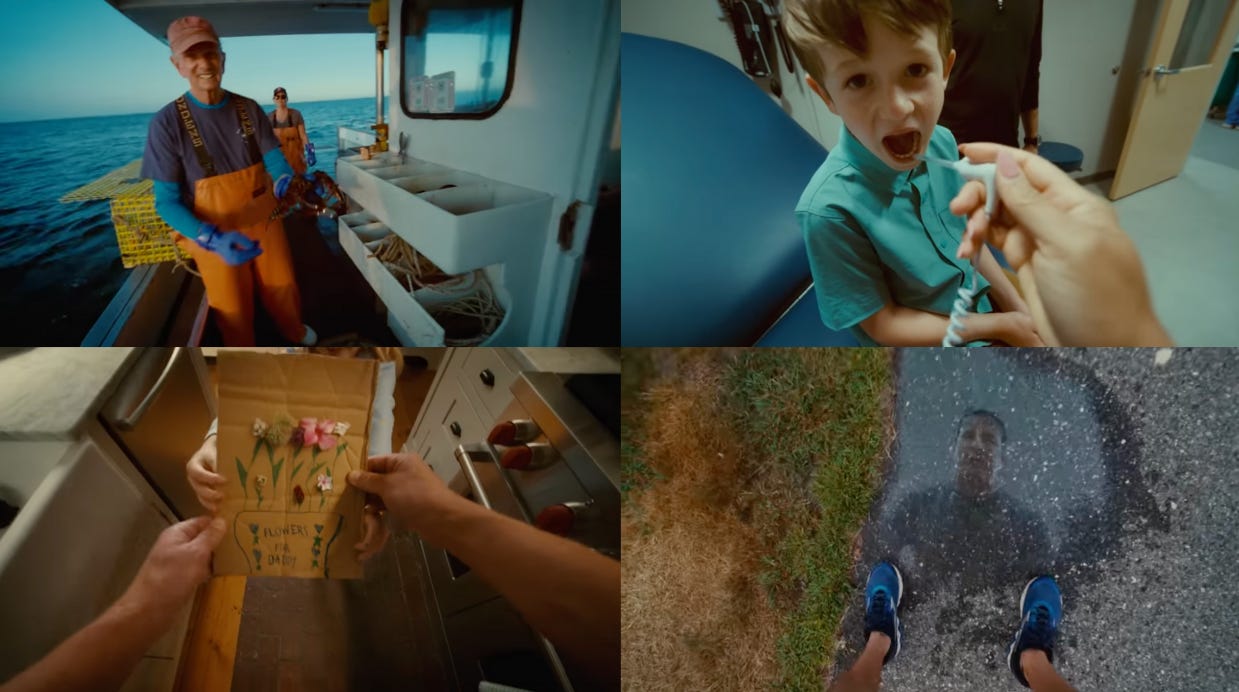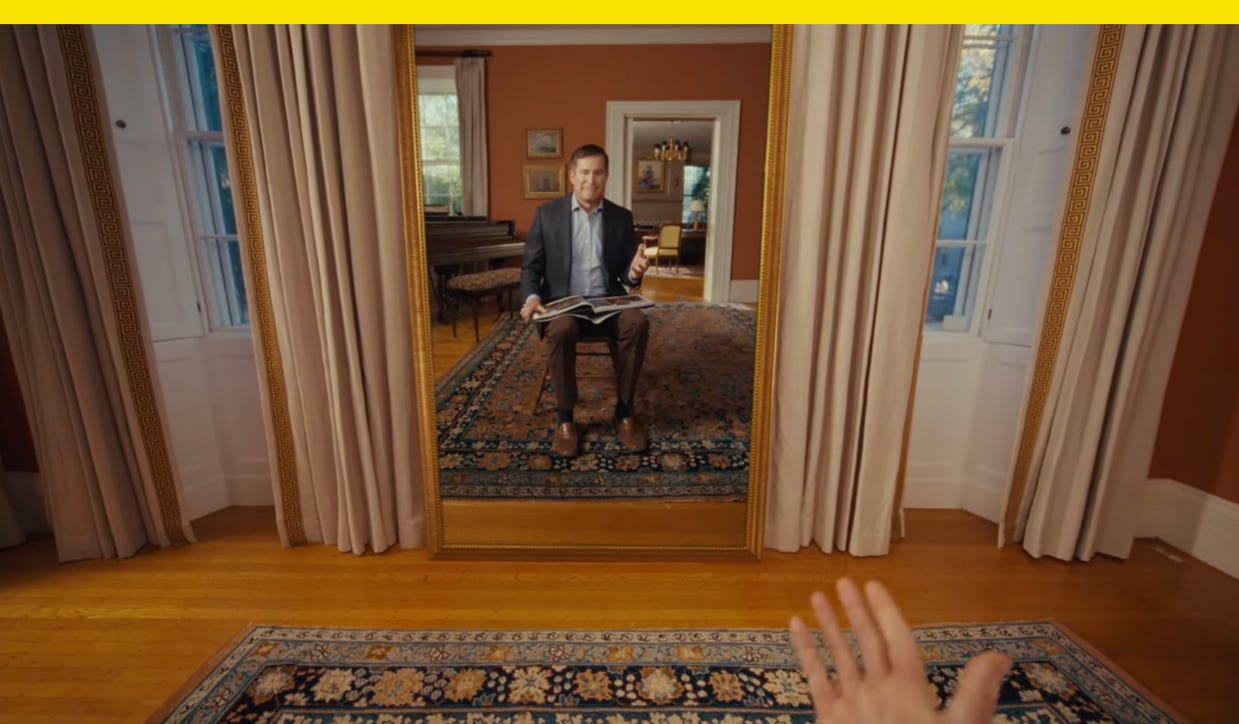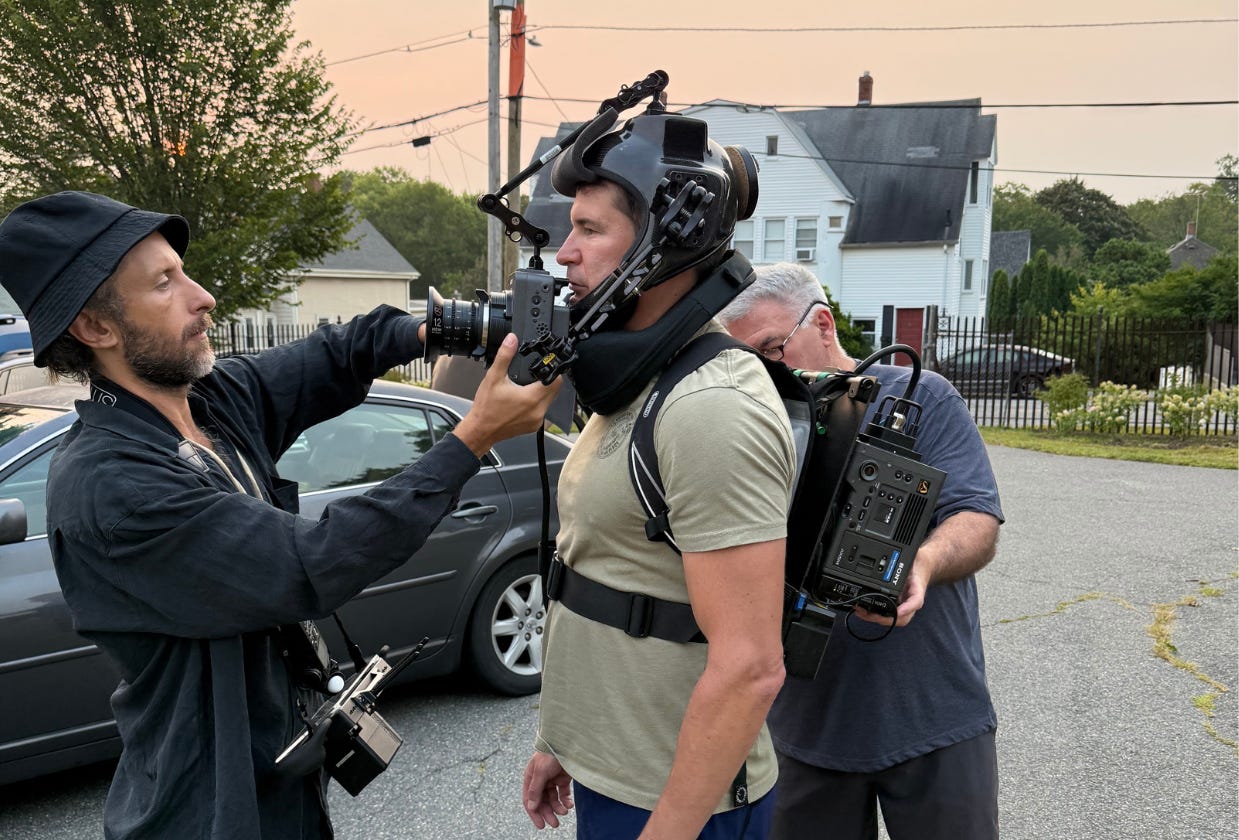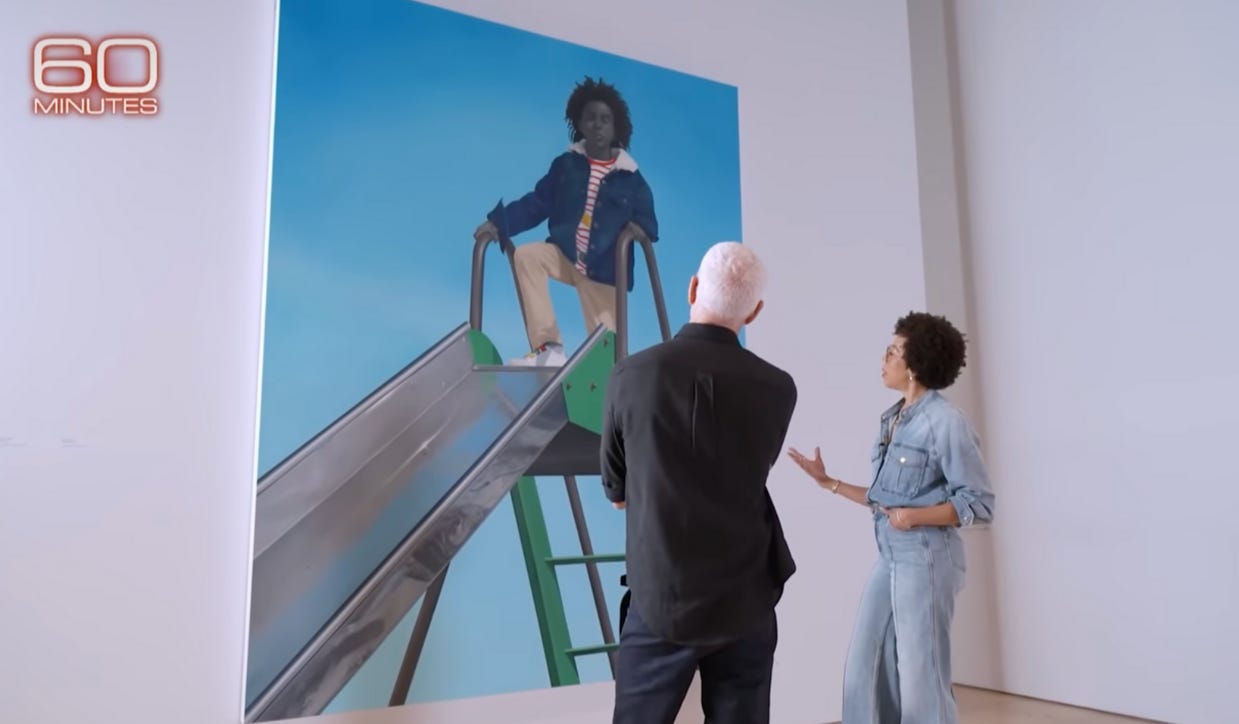To take on his own party, this Senate candidate looked in the mirror
Plus: Campbell’s Soup is suing a congressional candidate for ripping off their logo
For the video to launch his U.S. Senate campaign, Rep. Seth Moulton (D-Mass.) turned to a different point of view than voters are used to seeing in a typical political ad: his own. Like, literally.
A Marine veteran and six-term congressman, Moulton is among the Democratic candidates taking on his own party in next year’s midterm elections in what’s shaping up to be a generational contest pitting younger Democrats against sitting incumbents. It’s a fight for the party’s future after octogenarian former President Joe Biden’s single term and last year’s disastrous election loss, and Moulton, who was booed at Boston’s No Kings rally, has a fight ahead of himself.
Moulton’s primary opponent is Democrat Sen. Ed Markey, a staunch liberal who beat a literal Kennedy in the primary the last time he was up for reelection in 2020 before going on to win two-thirds of the vote in the general election. To do what an heir to Camelot couldn’t, then, requires more than just politics as usual.
In “Lesson,” Moulton’s launch video produced by the Democratic ad firm Adwell known for its compelling, creative ads, the POV is from Moulton’s perspective and perspectives that represent the people he hopes to represent in the Senate.

“From the outset, we wanted to show that Rep. Moulton is a different kind of candidate with a different approach, a different point of view,” Cayce McCabe, the founder of Adwell, tells me. “The concept of perspective was key. If you want to change, you have to be willing to look in the mirror and be that change.”
From there, they built the creative for the ad. It opens with the view from Moulton running through a cemetery as he tells a story he revisits at the close of the ad about seeing a 19-year-old Marine who had been shot and killed. It ties into the lesson he says it taught him about urgency and acting now.
“If I had found him just a few minutes earlier, at least he wouldn’t have died alone,” Moulton says of the young Marine. “It’s why I won’t wait.”
The ad shows the POV of a Massachusetts lobsterman out on the water to set the scene in the Bay State and visualize the idea of hard-working people, and the POV of a nurse as Moulton in his voice over talks about the need for universal healthcare, Republicans who “would rather shut down the government than lower healthcare costs,” and a reference the bipartisan 988 National Suicide Prevention Lifeline he introduced with Rep. Chris Stewart (R-Utah) in 2022. A POV at a train station illustrates the part in Moulton’s script about his high-speed rail proposal.
These outside perspectives validate Moulton’s record, and the main shot of the candidate sitting and speaking as the camera pans out throughout the spot to eventually reveal Moulton sitting in front of a mirror invites his self-reflection.
“We’re in a crisis and with everything we learned last election, I just believe Sen. Markey should be running for another six-year term at 80 years old,” Moulton says. “Even more, I don’t think someone who’s been in Congress for half a century is the right person to meet this moment and win the future.”
The ad’s POV scenes were filmed using a Sony Venice camera in Rialto mode, or a mode in which a camera’s image sensor is separated from the camera body, and it was mounted on a custom helmet rig that allowed the sensor and lens to be at about chin height.
“When we committed to first-person POV, we knew we needed a setup that would feel immersive but still deliver a cinematic image,” McCabe says. It “gave us the image quality of a full-size cinema camera, while letting us separate the sensor and lens to mount them on the helmet,” but it wasn’t light, and Moulton and the ad’s other subjects had to wear the heavy rig for their scenes.
McCabe says the goal of the ad “was to show Rep. Moulton’s energy, drive, and willingness to challenge the status quo,” and it’s not the only creative filming they’ve done this cycle. Their ad for Alex Bores, a New York State Assemblyman running to succeed Democratic Rep. Jerry Nadler for a U.S. House seat in New York City, uses footage filmed on a baby monitor to show the father of a two-month-old taking care of his kid. “I’m running for Congress for little guys,” Bores says, giving a political cliche new meaning.
These unconventional filming methods are meant to tell a different kind of story at a time when Democrats are looking for a new way forward.
“At a time when the Trump administration isn’t playing by the same rules, Democrats can’t keep running the same playbook,” McCabe says. Moulton’s launch video, he says, “underscores that change requires new perspectives, new strategies, and new leadership.”
Campbell’s Soup is suing a congressional candidate for ripping off their logo
No soup for you.
Here’s a campaign logo that might work… for a high school class vice president election. The Campbell’s Company has filed a lawsuit against a Michigan U.S. House candidate after she refused to take down an image of a campaign logo that was designed to look like one of the company’s famous red-and-white soup cans.
Campbell’s said in a lawsuit filed earlier this month in the U.S. District Court for the Eastern District of Michigan that the candidate, Democrat Shelby Campbell, copied “core design and trade elements” in her logo, which confused customers. Campbell refused to comply with a cease-and-desist and instead posted a screenshot on social media and wrote “Lmfao y’all gonna make me blow up and really win congress easily I ain’t scary byeeee,” according to court documents.
Campbell uses the soup-themed social media handle soup4change and hashtags that reference soup, and her campaign gave away Campbell’s Soup-style campaign stickers. In the suit, Campbell’s said customers repeatedly asked if they endorsed her, which they don’t. They note their iconic can has barely changed since 1898 and cite Andy Warhol’s 1962 work depicting the cans as proof of their fame.
Amy Sherald on the power of patriotism and never giving up on your dreams
“I’m the definition of an American,” the American artist says.
Artist Amy Sherald, who famously painted former first lady Michelle Obama’s official portrait, spoke to Anderson Cooper in a wide-ranging interview for Sunday’s 60 Minutes where she spoke about her practice, skipping the Smithsonian, and the heart transplant that saved her life at age 39. Sherald signs her name on her art with a heart at the end in honor of her donor, a woman named Kristin Lin Smith, so Smith lives in all her paintings. I’m not crying, there’s just something in my eye.
Sherald, whose show American Sublime will open at the Baltimore Museum of Art on Nov. 2 through April 5, 2026, said she once thought about quitting art but ultimately she “couldn’t give up. Like I always say, the world is full of quitters and most people don’t want the discomfort and most people don’t want the risk, so if I kept at it, then eventually something would have to happen.” She said she once used to sit in her studio and meditate and visualize herself in the Whitney Museum of American Art, where her work was displayed earlier this summer. Now that’s what I call manifesting.
Sherald also said she considers her work patriotic. “I don’t think there’s anybody more patriotic than a Black person,” she said. “I have to claim that patriotism otherwise I’m just handing it over to somebody to give me the definition of what it means to be American. But I know what the definition of what it means to be American is, and I’m the definition of an American.”
There’s going to be a Steve Jobs coin
The Golden State is inviting us to make something wonderful.
To mark the United States’s 250th anniversary, the U.S. Mint is releasing new $1 coins for each state, territory, and Washington, D.C., as part of the 2026 American Innovation $1 Coin Program. California’s coin will feature Apple cofounder Steve Jobs.
The coin, designed by designer Elana Hagler and sculpted by medallic artist Phebe Hemphill, shows Jobs sitting cross-legged in front of an idyllic Northern California landscape with the phrase “Make Something Wonderful.” The reverse side shows the Statue of Liberty.
The Mint says it works with governors’ offices to determine design concepts that are “emblematic of innovation” for the coin program, and not all of them will be people. Other coins the agency released designs for include Iowa, which shows agriculturist and “Father of the Green Revolution” Norman Borlaug, who won a Nobel Peace Prize for his work to feed the hungry; Minnesota, which shows a frozen food truck to honor mobile refrigeration; and Wisconsin, which shows a top-down view of the Cray-1, a 1970s supercomputer.
Have you seen this?
Why Trump is allowed to tear down part of the White House. When the ballroom was first announced this summer, Trump said the project “won’t interfere with the current building.” Those statements turned out to be false. [Fast Company]
Dutch far right gets unexpected boost from A.I., political ad ban. Meta and Google have blocked political advertising in Europe, leaving elections at the mercy of Big Tech’s algorithms. In the Netherlands, the first country in the bloc to go to the polls since the ban began, the biggest winner is likely to be the far-right Freedom Party, whose leader Geert Wilders has built his brand on viral shock campaigns and stunts, using outrage to get his content in front of users. [Bloomberg]
Michelle Obama is doing a fashion podcast. Former First Lady Michelle Obama is set to talk about style in a forthcoming podcast miniseries to go along with her book out next month, The Look. [Whig by Hunter Schwarz]








